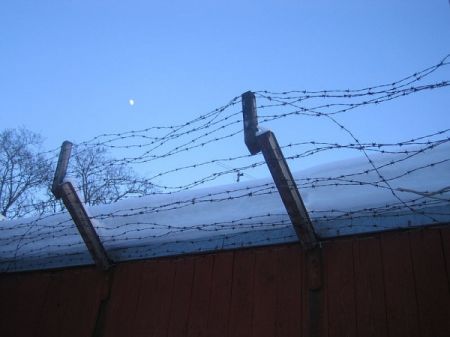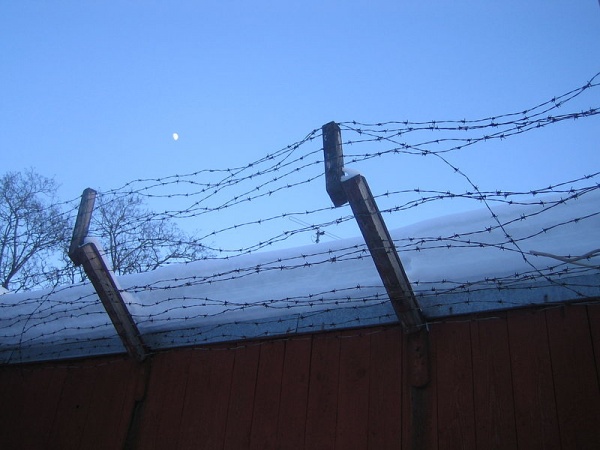
Alternatives to detention are at least three times cheaper in some countries than traditional detention and deportation.
The United States’ community supervision programme cost US$12 per day, as compared with US$61 per day for detainees, according to the International Detention Coalition (IDC)’s handbook titled “There are Alternatives: A handbook for preventing unnecessary immigration detention.”
Participants for the programme between 1997 and 2000 were identified through a screening and assessment process. They were required to have a verified residential address. Participants were referred to legal representatives and support services like food banks and health clinics. They also received information about immigration proceedings and reminders of court hearings.
The Appearance Assistance Program showed that majority of participants regularly attended immigration court hearings. Even 88 per cent of undocumented workers, who had little hope of winning their case, appeared at all hearings. Supervision doubled the rate of compliance, with 69 per cent of participants in intensive supervision complying with the final order to depart the country.
The programme provided “return counselling” to encourage irregular migrants to exit the country voluntarily, as opposed to deportation, such as by obtaining travel documents for them, buying tickets, and explaining how to confirm departure with the authorities. Undocumented migrants voluntarily departed the US as they wanted to be able to legally re-enter the country in the future.
Supervision tasks can also be undertaken by NGOs instead of immigration authorities.
Canadian NGO The Toronto Bail Program acts as a bondperson for detainees who do not have the resources or family ties to make bail. The organisation, which is funded by the government, identifies eligible detainees through a screening and assessment process, and then supports their applications for release.
The programme provides participants support to fulfil basic needs, as well as information and advice. Reporting and supervision are also part of the programme. The programme costs CA$10-12 per person per day, compared with CA$179 for detention.
It maintained a 96 per cent compliance rate in the 2009-2010 financial year.
Australia’s Community Assistance Support Program helps vulnerable clients resolve their immigration status quickly. Vulnerabilities include living with the effects of torture and trauma, experiencing significant mental health issues, living with serious medical conditions, incapable of independently supporting themselves in the community (for example, the elderly, frail, mentally ill, disabled), or facing serious family difficulties, such as child abuse or domestic violence.
The Australian Red Cross provides community services to referred clients, such as help sourcing sustainable accommodation, healthcare, counselling and other welfare needs.
The pilot programme between 2006 and 2009, which has since been expanded nationally, cost minimum AU$38 per day compared to minimum AU$125 for detention.
The programme had a compliance rate of 93 per cent. Also, 60 per cent of those not granted a visa to stay in Australia departed voluntarily, despite having stayed in the country for an average of more than six years.
According to the IDC, one’s voluntary departure to another country within the European Union cost €300 – 600, compared with up to €1,500 for escorted deportations. Voluntary departures from Australia cost one-third of traditional “locate, detain and remove” cases, which is about $1,500 compared with $5,000.
Malaysia’s immigration detention centres are overcrowded and lack medical care and good sanitation.
The United Nations Working Group on Arbitrary Detention said in its 2011 report that three detainees in the Lenggeng detention centre had died during the first five months of 2010. In 2009, 14 detainees died in immigration detention centres.
There is also no maximum detention period for immigration detainees. The UN Working Group on Arbitrary Detention said a 14-year-old boy has been at the Lenggeng detention centre for about two years.
About 10,000 people were deported in 2009, according to the UN Working Group on Arbitrary Detention. There are 13 immigration detention centres in the country with a capacity of around 6,000 places.
Yet, there are millions of regular and irregular migrants, refugees and asylum-seekers in Malaysia.
How much does it cost to detain and deport?
The Malaysian government should reveal how much funds are being channelled into immigration detention centres. The UN Working Group on Arbitrary Detention said the government recently allocated RM100 million to upgrade the physical conditions of immigration detention centres.

Children of migrants, refugees and asylum seekers should never be detained in immigration detention centres as they have a right to liberty. Detention should be used as a measure of last resort in any case.
Stateless people are especially prone to indefinite detention as other countries may be unwilling to take them in.
Malaysia should start exploring alternatives to detention to mitigate the problems of overcrowded detention centres and lengthy detention periods. Immigration authorities can supervise detainees – families with children especially – who are placed under the care of NGOs that are willing to support their welfare needs.
Indonesia allows refugees and asylum seekers to live outside detention while requiring them to report to immigration every two weeks.
Malaysia could explore using reporting and monitoring mechanisms to prevent irregular migrants from absconding.
It may be easier to just lock them up. But arbitrary detention violates one’s fundamental right to liberty.
Long-term solutions must be found to preserve children’s freedom and to prevent irregular migration. It is not an easy task. But we need to start somewhere.


WHY NOT?- GOOD CHEAP LABOUR & YOU DON'T HAVE TO FEED THEM- THEY HAVE TO WORK AND PAY FOR IT!